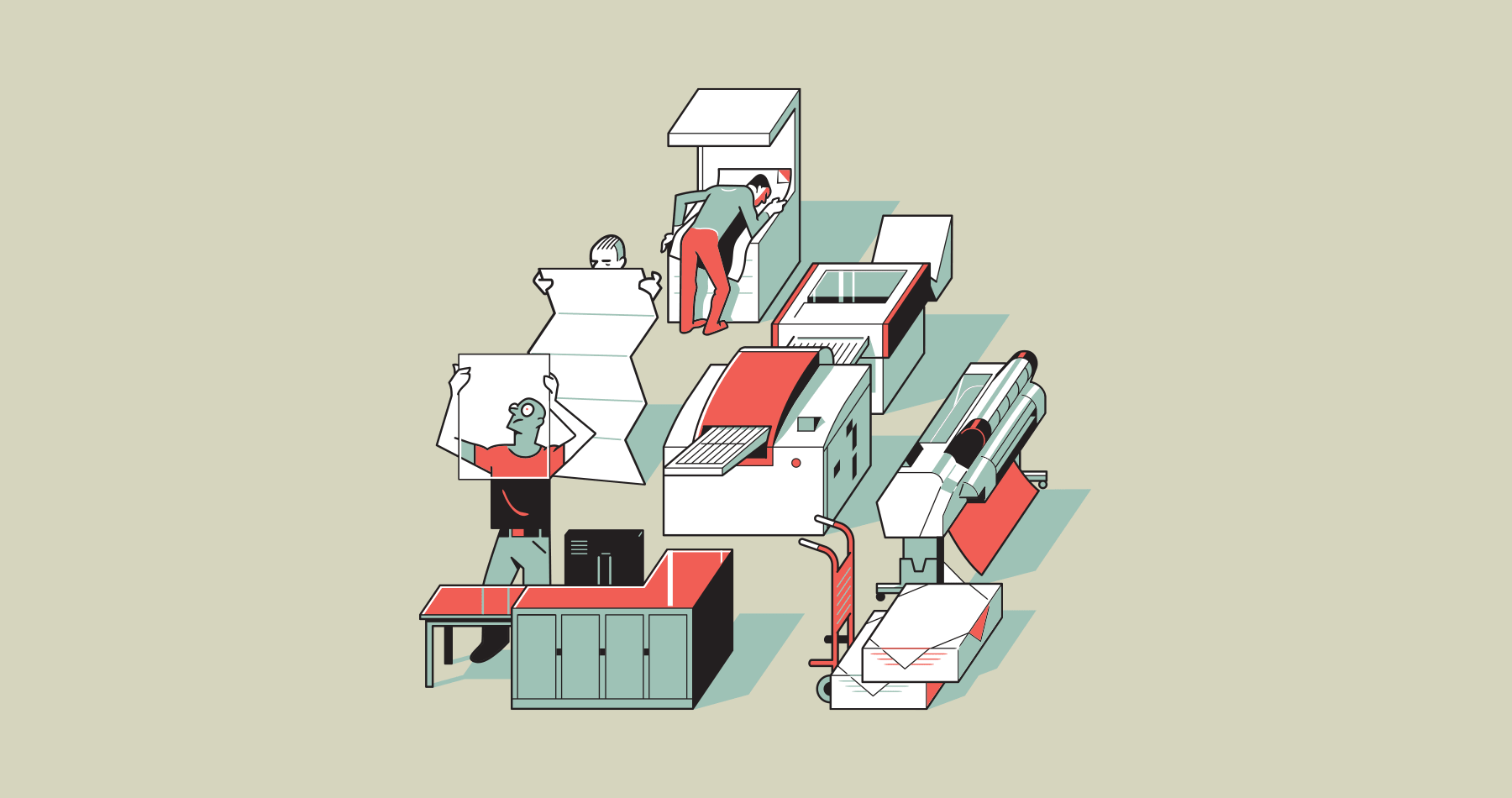Efficiency. Capability. Features and add-ons.
When it comes to the variables that help commercial printers set their capital investment expenditures, those are some of the ones that Oregon Printing Communications focuses on.
When you get right down to it, Mike Green, Manager of the Dayton, Ohio, printer says the decisions surrounding investments center on how you can help your customers impact their message.
"If I consistently do this right, then the competitive edge will occur as a result of the research, and thus worth the investment.”
— Chris Wallace, Owner/CEO, Performance Print Services
For efficiency, how will a piece of equipment or software help you do something more efficiently? Will it decrease the number of touches or the amount of time we need to work on something? Does it add automation to a manual process? How will it help our customer? Does this allow us to have more flexibility in production for cross-training and multiple operators?
“Making a capital investment can be daunting,” Green admits. “For us, we go through several steps before making any investments. The discovery process is extremely important.”
One of the first things the Oregon Printing Communications team does is have conversations with its customers. These conversations start to sort out if there is something its customers are looking for (a service or capability) it doesn’t currently offer. In the end, the Oregon Printing team is trying to make things easier for everyone involved.
“It’s really about doing the research,” Green says. “Going to shows, digging around on the internet, checking with peer groups, sitting in webinars. All of these are steps in the process when we look at a new capital investment. There’s examining hard data—all of the nuts and bolts that determine whether or not a capital investment makes sense.”
And in between the ROI, equipment and service options, budgets, etc., comes the fact that your decision must not only be warranted, but correct. “The biggest risk of a capital investment is that it doesn’t add value to the customer or increase efficiency,” Green says. “If it doesn’t do either one, or both of those things, then you have probably wasted the dollars that could have gone to something that adds one or both of those things.”
As a print shop that recently moved out of offset printing and has gone totally digital, Oregon Printing Communications has seen the shift from more paper, longer runs and less efficiency to shorter, personalized, more targeted marketing that reaches a customer's target in new and more personal ways. As an extension of its customer's team, it is more a partner and less a supplier.
For example, by moving more toward the front end of projects and partnering with clients (instead of just asking for the printing), the Oregon Printing Communications team finds the need for new software and digital solutions to help get their clients' message out across multiple channels and media.
The decision is the decision
If you ask Chris Wallace why his company makes the capital investments it makes, the answer is the customer every time. The owner and CEO of Performance Print Services says every capital investment his Durham, North Carolina, company has made has been predicated on the premise that the customers needed it to make this investment.
“If the answer is yes, then I consider cost, potential additional labor and ROI,” Wallace says.
The easier equation is that any investment—and the decision to approach it—has to make sense. For example, Performance Print outsourced its wide-format work for five years, each year watching as the volume of work increased. “It made sense to begin the research to bring a wide-format in house,” Wallace recalls. “Then, it was simply a matter of compiling financial data that would support whether or not this was a sound decision.”
Not unlike any decision on any front, the obvious risk is the financial burden capital investments can have on a company. That’s why Wallace spends a significant amount of time crunching numbers to make sure the justification is there. “If I consistently do this right, then the competitive edge will occur as a result of the research, and thus worth the investment.”
"Going to shows, digging around on the internet, checking with peer groups, sitting in webinars. All of these are steps in the process when we look at a new capital investment."
— Mike Green, Manager,
Oregon Printing Communications
The advice is as simple as it is straightforward: Analyze the work you are doing to make sure it is efficient from a production and cost standpoint. If you are able to gain efficiency that will increase productivity, you can proceed with a further cost analysis. “My earliest example of this was adding a creaser during our first year in business so that my business partner didn’t have to hand-crease brochures,” Wallace says. “That investment has paid major dividends.”
Furthermore, Wallace recommends taking a closer look at what you are outsourcing. Are you doing so much of that work that it might make sense to bring it in house? It is important to take the time to investigate the pros and cons and the cost analysis to help answer that question.
As the industry steamrolls ahead, continually adding innovative technological opportunities to increase the areas of efficiency and capability, today’s printers have other areas to watch, particularly staffing. For example, while Performance Print has a strong production team, Wallace sees a gap in production talent in the industry.
“I think we need to devote more resources to recruiting the next generation of production operators,” he says. “Forging relationships with technical colleges and vocational schools to help educate instructors and students is vitally important for our industry’s future.”
A blip in the next generation entering the industry as others age out means the need to accurately build your equipment portfolio is critical. “Technology is changing so quickly that as a company, if you fall behind, it’s hard to catch up,” Green says. “You have to find ways to automate as much as possible and to increase efficiency. With workforce demands, shortages in paper/supplies and inflation, it’s imperative that your business be as efficient and automated as possible.”
And, as printers head into the next frontier of print production and economics, the need to invest will always be the next decision on deck.
Other recent articles

The Vanishing

Weighing In

We’re OK

The Guide

By The Numbers

